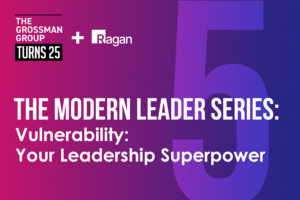Stakeholder mapping: Elevating internal communications to drive real results
Use this simple outline to understand who you need to reach internally.

Heather Whaling is the founder and CEO of Geben Communication.
Traditional internal communication strategies often fall flat in today’s diverse and dynamic workplaces. One-size-fits-all messaging fails to account for the wide range of perspectives, motivations, and needs that shape employee engagement. To truly resonate with a modern workforce, organizations need a more nuanced approach — one that fosters connection, alignment and measurable outcomes.
Enter stakeholder mapping, a game-changing tool that transforms internal communications from reactive and generic to proactive and personalized. This approach goes beyond the surface to uncover the human dynamics within your organization, enabling you to craft communications that reach the right people and inspire action.
Whether the concept of stakeholder mapping is new to your team or you’re looking for ways to deepen its impact, this guide will walk you through its fundamentals and practical applications. By leveraging this strategy, you’ll gain the clarity and focus needed to communicate effectively in even the most complex organizational environments.
What is stakeholder mapping?
At its core, stakeholder mapping is about understanding the people who influence — and are influenced by — your organization’s initiatives. It involves identifying key individuals or groups, assessing their levels of influence and interest, and tailoring your communication strategies to meet their unique needs. While commonly used in external communications, this tool is equally powerful when applied internally.
Stakeholder mapping isn’t just a list of names; it’s a living, dynamic strategy. It enables organizations to:
- Identify formal leaders, informal influencers and often-overlooked groups such as administrative staff.
- Categorize stakeholders by their relevance and roles in a given initiative.
- Craft personalized messages that resonate deeply and drive engagement.
When done well, stakeholder mapping ensures that your communication strategy evolves alongside organizational changes, keeping your messages relevant and impactful.
Stakeholder mapping in action
Implementing stakeholder mapping requires intention and effort. It’s more than creating a visual chart; it’s embedding strategic thinking into every step of your communication process. Here’s how to get started:
- Identify your stakeholders
- Start by listing all individuals or groups impacted by your initiative. Include formal leaders, informal influencers, and often-overlooked contributors. For example, administrative staff and frontline employees may hold critical insights that shape outcomes. Remember, informal leaders who lack official titles often wield significant influence within their teams and can serve as powerful champions.
- Use an influence-interest matrix
-
- Organize stakeholders based on their level of influence and interest in the initiative. This matrix helps prioritize your efforts:
- High Influence, High Interest: Engage closely and keep informed regularly.
- High Influence, Low Interest: Motivate their interest by aligning the initiative with their priorities.
- Low Influence, High Interest: Keep informed and provide opportunities to participate.
- Low Influence, Low Interest: Monitor and engage as needed.
- Organize stakeholders based on their level of influence and interest in the initiative. This matrix helps prioritize your efforts:
-
3. Customize messaging and delivery
-
- Tailor messages and delivery methods to meet the needs of each stakeholder group. Executives may require high-level overviews, while team leads benefit from detailed toolkits and actionable resources. The more aligned your communication is with stakeholder preferences, the more effective it will be.
4. Build feedback mechanisms
-
- Incorporate surveys, listening sessions or other feedback tools to gather insights, address concerns and continuously improve engagement. When stakeholders feel heard, they are more likely to align with and champion your objectives.
5. Treat your stakeholder map as dynamic
-
-
-
- Regularly update your stakeholder map to reflect organizational changes, ensuring no critical voices are overlooked. For example, during one project, the appointment of a new VP mid-initiative shifted key dynamics. The communication strategy stayed aligned by adapting the stakeholder map, and the new leader built trust seamlessly.
-
-
6. Track and refine
-
- Measure the effectiveness of your efforts through metrics like open rates, engagement levels, eNPS scores, and stakeholder feedback. Use this data to refine your approach for future initiatives.
The strategic edge of stakeholder mapping
Stakeholder mapping elevates internal communications from a functional necessity to a strategic advantage. In complex organizations, where messages can easily get lost or diluted, this approach ensures clarity, alignment and impact.
For instance, in a project with a national consumer services brand, we discovered that employees in a specific department only acted on communications if they came from their direct supervisor. This cultural insight meant our strategy had to equip supervisors with the necessary information to update their teams effectively.
We also identified a manager known for vocal complaints. By addressing this early, we tailored our strategy to mitigate potential disruptions.
By understanding and leveraging the human dynamics within your organization, stakeholder mapping can drive better decisions, foster stronger connections and deliver measurable outcomes. It’s not just a tool — it’s a catalyst for communication that inspires trust and transforms organizational culture.
Mapping your way to impact
In an era where connection and authenticity are more important than ever, stakeholder mapping offers a roadmap to better internal communications. By identifying key players, aligning messages with their needs and creating a dynamic, feedback-driven strategy, organizations can move from communication chaos to clarity and impact.
Stakeholder mapping isn’t just about better messaging; it’s about building trust, fostering engagement, and driving results. This is your starting point if you’re ready to elevate your internal communications to a strategic advantage. So, take the first step: map your stakeholders, refine your approach, and watch your internal communications transform into a powerful driver of organizational success.







Thanks for this insightful piece, it is very educative and reminds me of my Public Relations lecturer.
Indeed, stakeholder mapping is not just a tool, it is a catalyst for communication that inspires trust and transforms organizational culture.